The Small Business Guide to Building a Sales Funnel
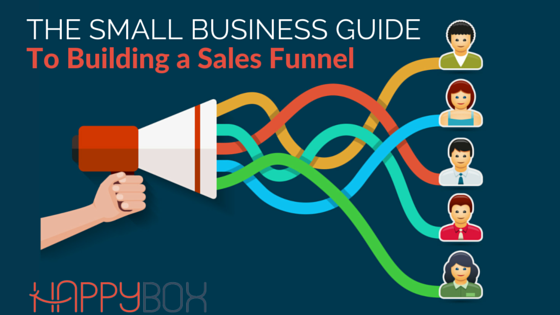
I don’t know how long you’ve been in business.
But if you’ve ever sold anything to anyone – you created a sales funnel to some degree, whether you realize it or not.
So what is a sales funnel exactly?
Without getting too technical… a sales funnel describes the process people go from being unqualified prospects (or leads) to actual paying customers.
And “funnel” is definitely the appropriate name.
The top of a funnel is wide, just like the number of people that might show some interest in your service. Whereas the bottom of the funnel is narrow, representing of the number of interested prospects that turn into paying customers.
So if you already have a sales funnel – why do you care?
Because the goal of any sales funnel is to quickly move customers from being “just interested” (i.e time wasting window shoppers) to becoming paying customers. Therefore, if your sales funnel sucks, you’ll have fewer customers.
It’s as simple as that.
If you are not consciously aware of the journey your customer takes to make a purchase, then you’re missing out on a lot of opportunity to improve your conversion rates and the amount of money you make!
Luckily, I’m here to help. So keep reading.
Important Note:
I get asked this question REALLY often, so I thought I would answer it right off the bat.
Your sales funnel activities are NOT the same thing as your lead generation activities.
Lead generation is what you do to acquire leads (example: paid ads, trade shows, word of mouth etc…).
Your sales funnel activities involve the journey and experience a lead goes through once they have shown some level of interest in your product.
Alright, so for the sake of keeping things straightforward, let’s examine an example of a long sales process from a service-based business.
I’ll break the process up into 6.5 Steps (HINT: the 0.5 Step is the MOST important)
Here we go…
Step 1: Top of the Funnel
Unqualified Prospects Time-Wasters
The top of any sales funnel is going to be made up of unqualified prospects.
These are people that have shown an interest in your service in some way.
And a majority of these individuals will never ever buy your service.
So get over it…
Because the goal isn’t to get them ALL to buy.
The goal is to figure out who is genuinely interested and able to pay!
Now depending on your business, the person may have entered their information on your website or left your business an after-hours voicemail or maybe they were referred to you by an old client.
But it doesn’t matter.
How you generated the lead is irrelevant.
The goal isn't to get everyone to buy but to figure out who is genuinely interested and able to… Click To TweetThe point is they have shown some interest in your product.
Now you can start the process of communicating with them to determine whether they are in fact a qualified lead for your business.
Step 2: Initial Communication
Here’s when things start to get a little tricky.
For many businesses, this is usually when they get on the phone and start a sales call to understand the problems that the person on the other end is facing.
Can you solve the problems that they have? Are they able to pay for the service? Is this a transaction that will be mutually beneficial?
There are 4 types of leads that can come from that conversation:
- Interested: They are genuinely interested in your company and they are ready to purchase
- Somewhat Interested: They are ready to purchase, but they’re shopping around to see what you can offer versus your competitors and they just want a “ball park” quote
- Not Now in the Future: They are interested in learning more about your service but not ready to buy just yet
- Completely Unqualified: They’re looking for pool supplies and you run a hair salon
Those that are “Interested” in your service usually get moved farther down the funnel right away.
But it’s the “Somewhat Interested” and the “Not Now in the Future” leads that need the most attention.
This is where the nurturing portion of your sales funnel comes into play.
Step 2 ½: Lead Nurturing
**THIS ONE IS IMPORTANT**
Fact. You spent a lot of time and money acquiring that lead.
Fact. They contacted you because they are genuinely interested in your service.
So are you just going to let that lead go to waste because they’re not hot, wallet-out, ready-to-buy interested today?!
If you find that a prospective client has a need for your service, but has some reason why they can’t make the jump right now (money issues, not enough trust, unsure) – you need to maintain communication with them so that your company stays top of mind.
So what do you do?
Here are some suggestions
Create an Email Nurturing Campaign
No matter what anyone says, email is still one of the best ways to connect with your customers. So whenever you get a new lead, ask them to be on your email list and send them information validating why they should choose your company.
The emails shouldn’t be “salesy” or “BUY NOW” type emails, but instead something informative that shows them that you’re an expert in your craft and helps them build trust in your company.
Create a Remarketing Campaign
Remarketing is one of the most underutilized paid advertising tactics used by small businesses; mainly because most businesses don’t understand how it works or how to use it properly. But remarketing is simple – when someone visits your website, a cookie is placed on their browser; after they leave your website they’ll see your paid ads on other websites on the internet!
This keeps your business top-of-mind and reminds them of your company even after they leave your website.
At the end of the day, the right choice depends on your business, service and industry.
But with these two automated systems, you can send prospects targeted and valuable information about your service, helping to build trust and establish your business as an authority.
So that when they are finally ready to purchase – your business comes to mind first.
Step 3: Present Solution
Once someone in your sales funnel becomes a qualified lead (i.e. by showing interest in your service and confirming they want to move forward) then you start developing and presenting your solution to their problem.
For a lawn care business, this might entail visiting their home and giving them a quote.
For an advertising agency, this might mean putting together a proposal and scheduling a follow-up meeting with the client.
Every business is different.
This is often a “make or break” part of the process – the pitch.
It is where pricing is first discussed and where many qualified leads may back out. That’s a normal part of business.
But the battle isn’t over.
Once again it’s important to apply some sort of follow up series with your customers.
People change their mind all the time. But for it to happen in your favour, you will need to use some tools and tactics to push them in the right direction (i.e. Step 2.5: Lead Nurturing).
Step 4: Negotiation and Commitment
So you finally have a customer – sometimes after months of coaxing – who’s ready to purchase. They’re sold on your product and agree to move forward.
Now it’s time to negotiate terms and manage expectations.
Why is this so important?
Because a happy customer is also one that will refer you more customers.
Being very clear about what you’re delivering, when you’re expecting to deliver, and for how much will have an enormous impact on your customer’s happiness at the end of the job.
I know, I know… You’re a business that “under promises and over delivers” right?
But in my experience, its better to be consistent and clearly outline your project plan than to try and surprise your customers with something they didn’t ask for, or expect you to do!
Step 5: Payment and Delivery
Congratulations! You’ve made it through the trenches.
You’re ready to get payment and deliver your product.
This is when most businesses think the “selling” portion of their job is done. And it very well could be.
But if you stop here, you leave a ton of opportunity on the table.
At this point, you should be thinking about the next phase of your sales funnel… the referral.
It’s amazing how many businesses “built their business on referrals” and don’t have a system in place to promote them!
If you’re getting referrals naturally without even lifting a finger, just imagine how many referrals you could be getting if you had a process in place that gave your customers the tools and incentives to make referrals to your company easier and more attractive.
Referrals are the backbone of any good business.
But the sad truth is – people are extremely lazy and passive. The one’s that are willing to give you a referral on their own accord are few and far between.
That is why it’s so important that when you’re doing a job or shipping a product you remember two things:
- Attention to detail – it’s the little things people remember and talk about
- Make things easy – don’t expect people to go out of their way or do things on their own, make sure you provide the tools for them to do it
Step 6: Follow-ups, Referrals, and Upsells
The job is done. The product has been shipped and received. The client has left the building.
Now it’s time for the follow-up.
There’s an old adage that says “success is in the follow up”. And this couldn’t be truer.
After delivering, you have to make sure to follow-up with all of your clients. Because it’s the absolute best time to ask for a referral and pitch any upsells on their service.
In Step 5, you should have planted the seed for a referral.
Now it’s time to close the deal.
The best and simplest way is to ask with an email.
What you say in the email and how you ask for a referral can differ greatly based on your company. But here’s an example of a referral email that could work well for a local service based company:
“Hi _____
(Your Name) from (Company Name) here…
I just wanted to send you a personal thank you for choosing us!
(Company Name) is a growing business in the (Your Location) area, and your support means a lot to us.
We pride ourselves in providing an outstanding quality of service and workmanship. So if, for whatever reason, you were not completely satisfied, please let us know and we will make it right!
If I could ask for 2 minutes of your time, we would love for you to give an honest review of your experience with us on Google+ (…Homestars, Facebook, Home Advisor, whatever you want!).
Your feedback means the world to us.
The review should only take about 2 minutes.
Please find the links below and don’t hesitate to hit “REPLY” to this email if you have any questions at all.
For Google+ CLICK HERE >>
For Facebook CLICK HERE >>
Thank you again for your business and we look forward to hearing from you!
Sincerely,
(Your Name and Signature)”
You can use this sample and customize it to your needs. But here’s are some things to keep in mind:
- Make the email friendly and personal
- Thank them for their business
- Ask for the referral – don’t just expect it
- Make referring easy by embedding the link directly into the email
Some final thoughts…
You work hard in your business to provide a great service and outstanding quality.
You deserve referrals – but you need to give your customer the tools and a reason to give you one.
If you understand the journey your customer takes at every stage of your sales funnel, then you can you improve your customer’s experience with your company, not just with your final product.
People buy people. People buy brands. People buy experiences.
If you’re only focusing on the final product and not your customer experience, then you’re just a commodity.
Commodities compete with price. Brands compete with experience.
Commodities compete with price. Brands compete with experience. Click To TweetYour success depends on the experience you give your customers.
Before. During. After.
More Examples
This was just a basic example of the type of sales funnel that a service-based local business might implement.
A sales funnel will look drastically different for an eCommerce website, physical store or other types of businesses. Every business is unique, and your sales funnel should be unique to your company and the processes that you implement.
To better understand how different companies use innovative sales funnels to sell their product, are some popular examples;
Example #1: Groupon’s Sales Funnel
Groupon has grown to become the largest group-buy service online today, in part to their innovative marketing and sales funnel processes.
The Groupon sales funnel places very heavy importance on email. As soon as you enter their website, it’s basically the only thing that you see.
Step 1: Email Capture
Groupon requires that all new visitors enter their email when they first arrive at the website. Their landing page is simple and straightforward.
This serves two purposes. First, the email serves as a username to login and see the local deals that Groupon has available in their city. Additionally, it allows Groupon to email new deals to interested parties.
Step 2: Internal Pages
After entering their information on the Groupon page, users are taken to the “offer” page. Groupon strikes deals with local businesses, allowing discounts when purchases are made in bulk. Large cities often have hundreds of thousands of deals available – which are only accessible after providing Groupon with your email address.
Step 3: Email Campaigns
Groupon relies heavily on email campaigns to get the word out about their newest offers. Since Groupon employs a team of salesmen in large markets, the deals available within a given city are constantly changing.
Additionally, as the user interacts more with Groupon, they learn more about them. This allows them to email offers that each individual might specifically be interested in. For instance – a user that frequently purchases offers for Italian restaurants might be interested in hearing about new offers for Italian restaurants as soon as they arrive.
Step 4: Purchase
Whether a user makes a purchase immediately after entering their email address, or down the line after hearing about a deal through email – they are essentially at the same point in the sales funnel process. Some never move forward from that position.
Why This Works for Groupon
Groupon is all about exclusivity. They offer deals that are brokered by their sales team. These deals aren’t available anywhere else.
Groupon has created a solid system – requiring an email to even enter the deals page. This ensures that they will be able to let people know about new deals, while falling in line with the exclusivity they are trying to create.
The value proposition that they offer on their landing page (“40%-90% off in your city”) is straight-forward, simple and effective. These, combined with Groupon’s brand awareness have made for a very simple but effective salesfunnel.
Example #2: Planscope.io’s Sales Funnel
Planscope.io is a simple project management, CRM, and invoicing platform tailored specifically to freelancers and teams that work directly with clients. The software is designed to streamline the process.
Planscope employs a sales funnel that is actually very different. They aren’t an “original” idea. There are plenty of project management, CRM and invoicing platforms that would work great for freelancers and teams, but very few that throw them all into one streamlined, simple setup.
The selling power of Planscope is in its focus. Its features are specifically designed for freelancers and small agencies. Planscope likely wouldn’t be the best solution for huge corporations and agencies. In order to show the differences between them and competitors, the Planscope sales funnel is quite a bit different;
Step 1: Homepage Email Capture
Planscope, like Groupon, employs a very email-capture centric landing page. The copywriting is simple – make your agency more efficient.
The homepage contains features, a written letter from the founder, and some quick screenshots of the dashboard.
After entering your email details, you are granted a free 14 day trial offer and then you are taken on a tour of the backend, which is where the product really separates itself form the competition.
Step 2: Backend Tour
When freelancers and small agencies are looking for new project management software, the backend is arguably the most important feature. There are plenty of solutions, but what separates those solution sin the eyes of the freelancer is the backend. Is it easy to use? Is it flexible? Does it do everything I need it to do?
Planscope’s sales funnel quickly dispels these questions with a quick tour of the backend.
Users are guided through several pages that briefly explain the different backend features through simple overlays.
At this point, they are putting their value proposition on full display, teaching their audience how to use the software effectively, and giving themselves a much better chance of securing them as a monthly client moving forward.
The free tour provides a number of benefits.
- Familiarize users with the backend. They learn how to use Planscope before entering a single detail.
- Increase likelihood of beginning to use the software. This is the biggest hurdle for a SaaS company. If the user never enters a single detail, will they be likely to begin paying after their free trial ends in 14 days? Planscope hopes that walking them through the process will make them more likely to start using the software, and less likely to move to another solution after the 14 day trial period.
- Decreases support tickets. Users receive free training before ever using the software. This eliminates a lot of questions that new users will undoubtedly have about using their system.
Step 3: Open up the Trial
After going through the tour of the backend, users are then dropped into the pond and allowed to begin using their free 14 day trial. The hope is that they will start using the software before the trial ends, making the choice of a different solution too big of a hassle.
Why This Works for Planscope
Planscope might be well-executed, but it isn’t an original idea. They have to sell their users on being the best available solution for freelancers and small agencies.
They have an uphill battle – so they get straight to the point and explain why their backend is perfect for what small agencies need, all while quickly giving users a quick lesson on using the product.
Conclusion
Your sales funnel is there, whether you know it or not. Every business has a process that they use to turn interested parties into customers. Some are just not aware that they actually have one, and for that reason, aren’t able to take any steps to optimize it.
Think about how you sell your services now. What are the actual steps that you take to go from receiving that phone call or email, to delivering? What happens in the in-between, and how can those processes be improved or automated?
As you evaluate your own sales processes, think about where they could be improved. Where do customers drop out of the process most often? Why is that happening? Take steps to fix those problems.
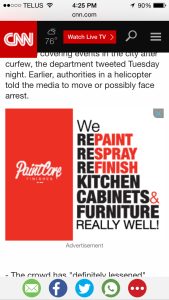
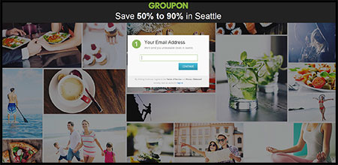
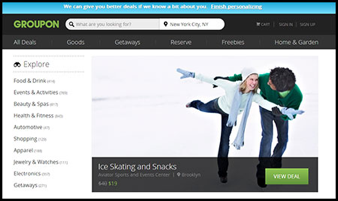
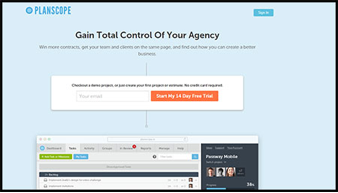
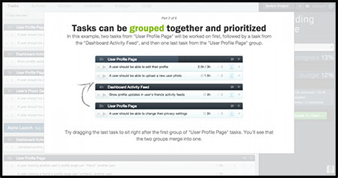
I have a small bath and body boutique, and when I first started, I
was approaching other businesses to get my name out there. As it
grew, and my online presence got more noticeable, I was able to do
really well with online purchases, and have gotten to where I am
now shipping all over the country. And yes, email is a wonderful
way to generate and get new customers and retain the old ones.
Hey Piper. It’s great to see that you found a way to connect your offline activities to what you are doing online. Did you offer some kind of incentive for businesses to visit you online? I’m curious to know. Glad to hear your business is doing well 🙂
My husband has a new leather business that he’s recently started a
few months ago. He really just sticks to social media as his
platform, specifically Instagram. And it’s done really well for
him. Of course, he’s not too personable a person, so since I work from home, I am doing a lot of the follow-ups and contacting potential customers. And we’ve gotten many referrals due to the incentives we offer to our current or past customers.
Right on! I’m so happy to hear that you’re leveraging your existing clients. So many businesses feel that the relationship is over once the job is done or the product is shipped. It’s important to have SOME level of post-sale interaction with your customer. Even if it’s just a survey to ask how you did. Not only does it show you care about the quality of your product/service, but it also keeps you top of mind for future referrals. All the best.
These are some great tips. I have a small business and I find that sponsoring community activities, whether it’s a barbecue or family movie night, fun kids’ day, will do really well to get you known in the local community. And that alone can get you very good business.
Really appreciate you sharing this post. Really Great.